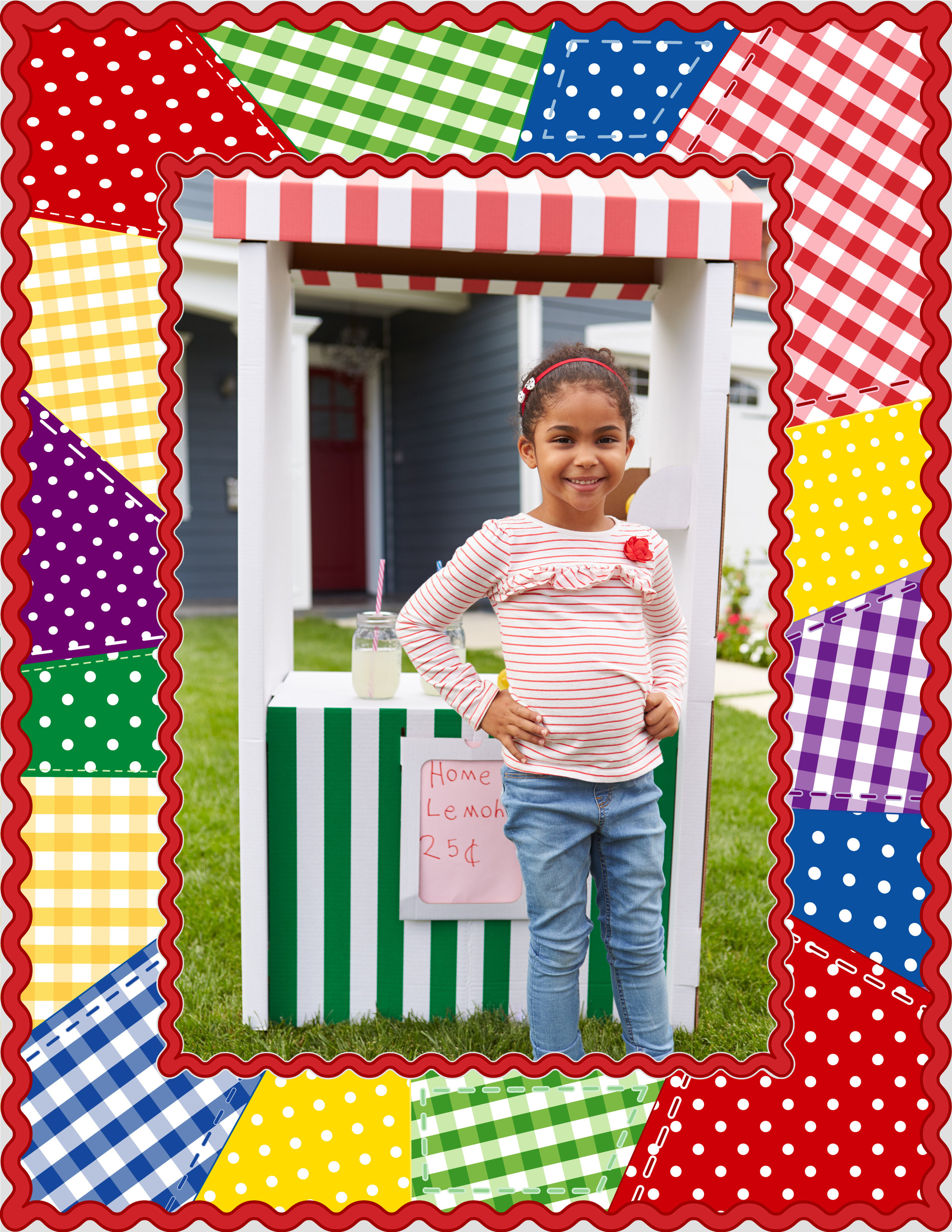Today, on Day 9 of Financial Literacy Month with FUTURES: Financially Literate Kids for a Financially Literate Society™, we’re talking entrepreneurship—and it tastes delicious. Ask your kids or students if they know what an entrepreneur does. Do you know any entrepreneurs? Have you ever been an entrepreneur?
If they answer “no,” tell them to think again. They might not realize that anyone who has ever had a babysitting gig, a paper route, or a lemonade stand has worked as an entrepreneur. Share examples of entrepreneurs in your neighborhood—the dry cleaner, the food truck owner, and even the candy store owner are all entrepreneurs.
So, let’s take a closer look at what it takes—the logistics of—running a lemonade stand. What happens at a lemonade stand? Who are the different people who participate? How do you get ready to open a lemonade stand?
The entrepreneur buys lemons, sugar, and cups to make lemonade.
The entrepreneur makes lemonade.
The entrepreneur sells lemonade.
The entrepreneur buys more supplies to make lemonade.
Produce It and Consume It!
Once kids grasp the concept that running a lemonade stand is like running a small business, it’s time to relate the scenario of the lemonade stand as a way to introduce the economic concepts of producers and consumers. Explain that when an entrepreneur buys lemons, sugar, and other supplies to make lemonade, she or he is a consumer. When the entrepreneur makes and sells lemonade, he or she is a producer. Explain that the people who buy the lemonade are also consumers.
Ask kids to make a list of examples of times they’ve acted as a consumer and times they’ve acted as a producer. Can a person or business ever be both a producer and a consumer? You can ask these questions while you’re out an about or when kids “consume” paper and paint for their next class project.
Let’s Make a Deal!
Now that they know how a lemonade stand works, ask kids how they think they would decide what to charge for each cup of lemonade. Begin by prompting them to think about everything they need to “consume” or buy in order to make the lemonade. Ask kids how they might decide on pricing? Does their answer signal you that they’ll make a profit?
As a first step in thinking about pricing, have kids look up the cost of all the ingredients online or by asking family members what they last paid for these items at the grocery store. Remind them that lemons and sugar cost money, but they also will need many other things—materials for a sign, the stand itself, a pitcher, and cups.
Based on all these factors, ask kids to come up with a plan. How many cups need to be sold to “cover” costs? If the price is too low, the stand isn’t profitable. If the price is too high, no one is going to become a customer. Try to settle on what is a reasonable price to charge for a cup of lemonade at a lemonade stand. Ask kids to think about how much THEY would pay for a cup of lemonade—with their own money? This is a great way to tap into the concept of fair market value. Remind your budding entrepreneurs that consumers have to want or need what you are selling much more than they want or need the dollars in their pocket.
How do producers and consumers decide on a price that meets BOTH their needs?
Ask kids logistical questions like:
How will you make change?
Do you need to begin with a bankroll? How much?
What will you do if you run out of lemonade?
What is your plan for any leftover lemonade?
Will you have a sale to “drink up” the excess? (Or is lemonade on the menu for dinner?)
Safety First!
Who’s feeling thirsty now? If your kids want to plan a real lemonade stand, remind them that safety always comes first. Any lemonade stand should be in a safe place such as a community center, as part of a school event, or at a block party or other neighborhood gathering. Always have approval from adults first. If your kids are permitted to venture outside for their lemonade stand, an adult should always be close by even if it is in a place you know well. Besides, it’s a great photo opportunity for your budding entrepreneurs. Imagine being able to share that first business with your grown child when a real first business is launched!
Visit Us Every Day in April
Tomorrow, tune in again as we continue Financial Literacy Month with a close look at the four kinds of resources that go into a simple peanut butter-and-jelly sandwich! Hungry?
For more information about FUTURES: Financially Literate Kids for a Financially Literate Society™ for students in kindergarten through eighth grade or to download any of the 29 sections of the program, please click below.




